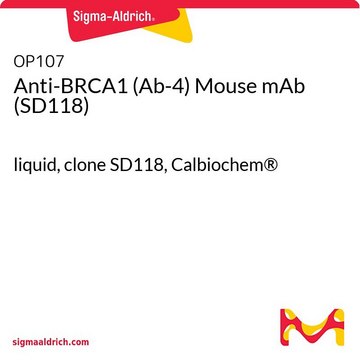10236276001
Roche
DAPI
4′,6-Diamidine-2′-phenylindole dihydrochloride
Synonym(s):
4′,6-Diamidino-2-phenylindole dihydrochloride, 2-(4-Amidinophenyl)-6-indolecarbamidine dihydrochloride, DAPI dihydrochloride
About This Item
Recommended Products
Quality Level
Assay
>90%
form
powder
packaging
pkg of 10 mg
manufacturer/tradename
Roche
λmax
340 nm in aq. suspension
fluorescence
λex 340 nm; λem 488 nm (nur DAPI)
λex 364 nm; λem 454 nm (DAPI-DNA-Komplex)
storage temp.
room temp
SMILES string
Cl.Cl.NC(=N)c1ccc(cc1)-c2cc3ccc(cc3[nH]2)C(N)=N
InChI
1S/C16H15N5.2ClH/c17-15(18)10-3-1-9(2-4-10)13-7-11-5-6-12(16(19)20)8-14(11)21-13;;/h1-8,21H,(H3,17,18)(H3,19,20);2*1H
InChI key
FPNZBYLXNYPRLR-UHFFFAOYSA-N
Looking for similar products? Visit Product Comparison Guide
Related Categories
Application
Biochem/physiol Actions
Quality
Principle
Preparation Note
Preparation of stock solution
Dissolve in double-dist. water to a final concentration of 1 to 5 mg/ml.
Note: Do not use any buffers.
Preparation of working solution
Dilute the stock solution with methanol to a final concentration of 1 μg/ml. The working solution is stable at 2 to 8 °C for about 6 months.
Storage conditions (working solution): Stock solution (1 to 5 mg/ml) at -15 to -25 °C for 12 months.
Working solution (1μg/ml) at 2 to 8 °C for about 6 months.
Reconstitution
Note: Prepare aliquots and store at -15 to -25 °C.
Storage Class Code
11 - Combustible Solids
WGK
WGK 2
Flash Point(F)
Not applicable
Flash Point(C)
Not applicable
Certificates of Analysis (COA)
Search for Certificates of Analysis (COA) by entering the products Lot/Batch Number. Lot and Batch Numbers can be found on a product’s label following the words ‘Lot’ or ‘Batch’.
Already Own This Product?
Find documentation for the products that you have recently purchased in the Document Library.
Customers Also Viewed
Our team of scientists has experience in all areas of research including Life Science, Material Science, Chemical Synthesis, Chromatography, Analytical and many others.
Contact Technical Service









